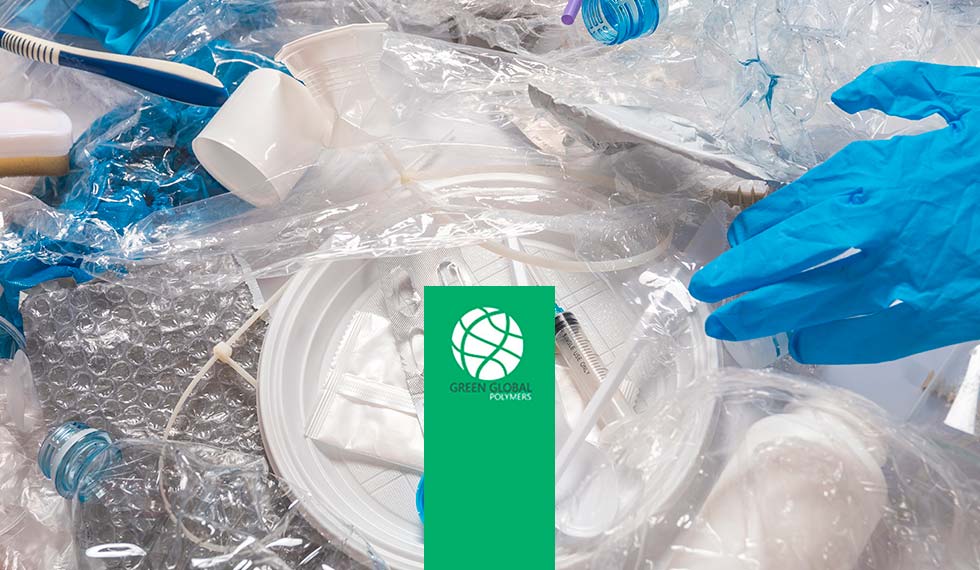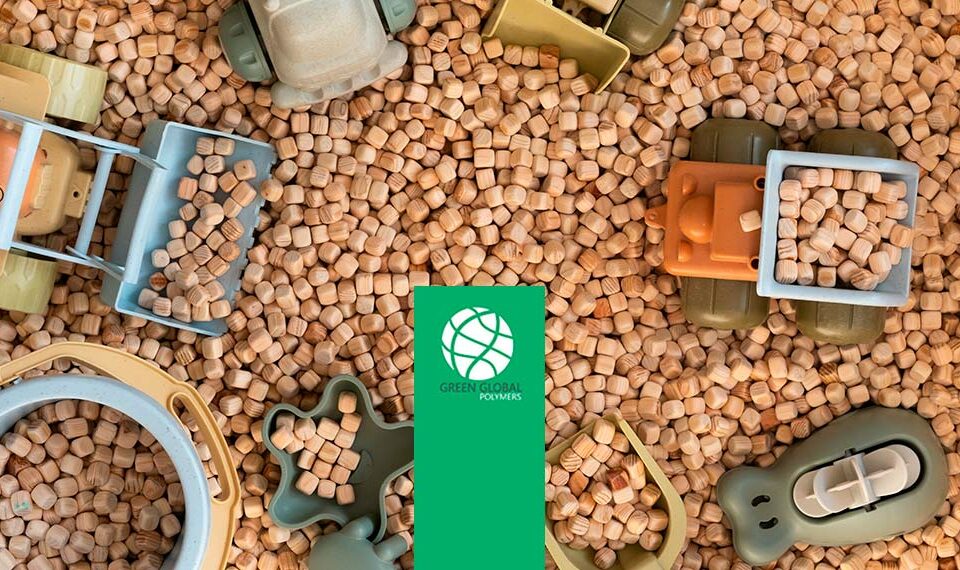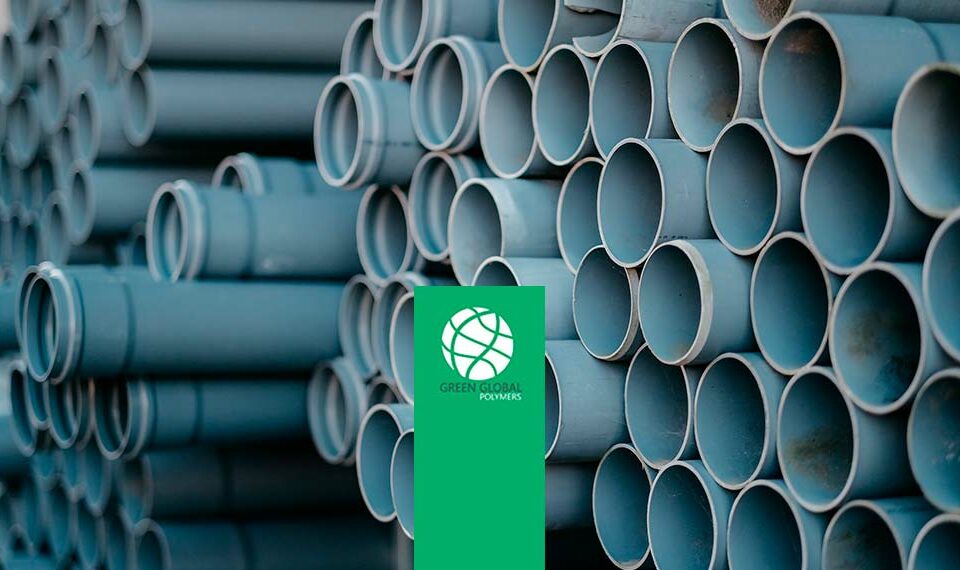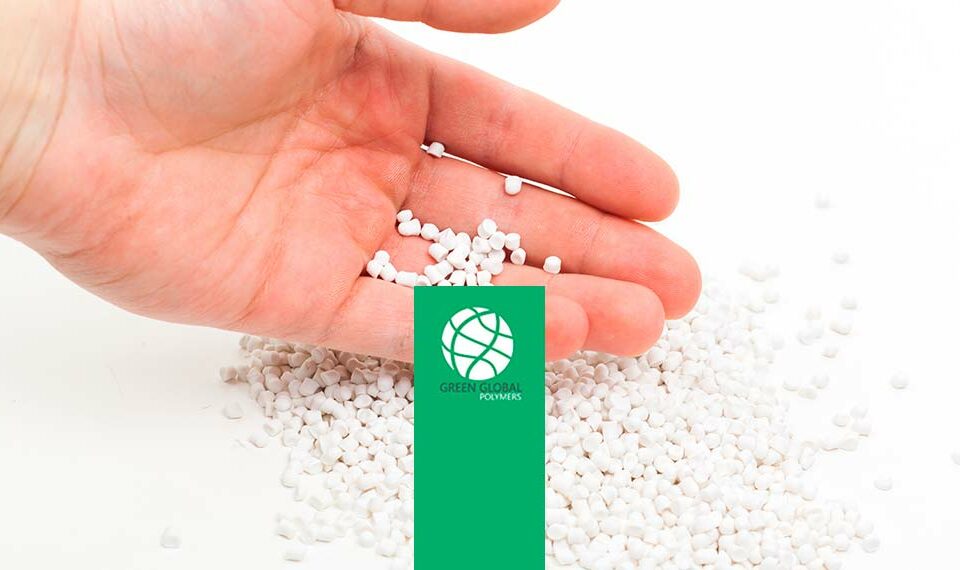
Los plásticos no son todos iguales. Su composición química y su comportamiento térmico hacen que algunos sean más fáciles de reciclar que otros. A continuación, te presentamos los tipos más comunes de plásticos que se pueden convertir en granzas .
Polipropileno (PP), usos y ventajas en reciclaje
El polipropileno es uno de los plásticos más reciclables del mercado. Lo encontramos en envases de yogur, tapas, pajitas, muebles de jardín y componentes del automóvil. Su bajo peso, resistencia y estabilidad térmica lo hacen ideal para el reciclaje.
En Green Global Polymers trabajamos con PP tanto rígido como flexible. Tras el proceso de lavado, triturado y extrusión, obtenemos una granza reciclada de PP perfecta para ser utilizada en productos moldeados por inyección.
Polietileno de alta y baja densidad (PEAD – PEBD)
Tanto el polietileno de alta densidad (PEAD) como el de baja densidad (PEBD) tienen un gran potencial de reciclaje. Están presentes en botellas de detergente, bolsas de supermercado, film industrial, bidones o tuberías.
Gracias a nuestra experiencia, podemos transformar estos materiales en granzas estables que se adaptan a múltiples aplicaciones industriales. En el caso del PEBD, es especialmente útil para fabricar nuevas bolsas o film agrícola reciclado.
Polietilentereftalato (PET), clave en la economía circular
El PET es ampliamente utilizado en botellas de bebidas, envases alimentarios y fibras textiles. Es uno de los plásticos con más circuitos de reciclaje establecidos.
En nuestra planta, recibimos grandes cantidades de PET que pasan por un proceso exigente de clasificación por colores y niveles de contaminación. La granza resultante puede volver a ser usada para fabricar botellas, bandejas o incluso textiles reciclados.
Policloruro de vinilo (PVC), reciclaje especializado y controlado
El PVC es un plástico más complejo por su composición química. Se encuentra en tuberías, ventanas, cables eléctricos y productos médicos. Tiene una alta resistencia a la llama, a la humedad y a la abrasión.
En Green Global Polymers somos especialistas en triturado de PVC, especialmente en su variedad rígida. Nos encargamos de recuperar este material y transformarlo en plástico triturado listo para reutilizar, conservando su resistencia estructural. Es un proceso controlado que requiere experiencia y conocimiento técnico.
Poliestireno (PS), ¿cuándo se puede transformar en granza?
El poliestireno puede encontrarse en su versión rígida (CDs, utensilios, carcasas) o espumada (EPS, como el porexpan). Aunque su reciclaje es más complicado, cuando llega en condiciones adecuadas también puede ser procesado.
El triturado y granulado del PS requiere un control térmico especial debido a su baja densidad y su fragilidad, pero es posible. Su granza se puede usar en productos de menor exigencia mecánica.
¿Qué factores determinan si un plástico puede transformarse en granza?
No basta con que un plástico sea técnicamente reciclable. Su estado físico, nivel de contaminación y tipo de aditivos juegan un papel clave. Algunos factores decisivos:
- Pureza del material: los plásticos mezclados (multicapas) son más difíciles de reciclar.
- Contenido de colorantes y aditivos: ciertos colorantes afectan el resultado final.
- Humedad y residuos orgánicos: dificultan la extrusión.
- Compatibilidad con otras resinas: mezclar polímeros incompatibles reduce la calidad de la granza.
En Green Global Polymers aplicamos protocolos estrictos para asegurar que solo procesamos plásticos que pueden ofrecer un resultado final útil y de calidad.
De desecho a recurso en Green Global Polymers
Desde nuestros inicios, hemos apostado por recuperar lo que otros desechan. En nuestra planta de Ribarroja, operamos diariamente una línea de lavado y triturado con la que convertimos toneladas de plástico en recursos útiles.
Por ejemplo, cada semana procesamos grandes volúmenes de PP postconsumo procedente del canal alimentario. Tras pasar por nuestras fases de selección y limpieza, obtenemos una granza de PP reciclada que posteriormente se emplea en la fabricación de cajas de logística reutilizables.
Lo mismo ocurre con el PET, que recuperamos de envases y botellas. Clasificado por color, triturado y extruido, se convierte en una granza de alta calidad, apta para la fabricación de nuevos envases o fibras textiles.
Este trabajo es posible gracias al compromiso de nuestra familia, nuestro equipo técnico y la confianza de nuestros clientes.
Ventajas de usar granzas recicladas frente a materia prima virgen
Apostar por la granza reciclada no solo tiene sentido desde el punto de vista ambiental. También representa un beneficio económico y estratégico para las industrias:
- Menor coste en comparación con la resina virgen
- Reducción de emisiones de CO₂ asociadas a la extracción y producción de plásticos nuevos
- Mayor control de stock y flexibilidad en la cadena de suministro
- Cumplimiento de normativas europeas de sostenibilidad y reciclaje
En nuestro caso, muchos de nuestros clientes destacan el alto rendimiento y fiabilidad de nuestras granzas, lo que les permite mantener la calidad de sus productos mientras mejoran su huella ambiental.
La importancia del reciclaje industrial en la economía circular
La economía circular no es una teoría: en Green Global Polymers la practicamos cada día. Recuperar plásticos, transformarlos en granzas y reintroducirlos en el ciclo productivo es nuestra manera de combatir la contaminación, evitar el agotamiento de recursos y generar empleo local.
Cada tonelada de plástico que transformamos es una victoria contra el desperdicio. Por eso decimos que queda mucho por hacer, pero estamos convencidos de que todo plástico puede tener otra vida.
Trabajamos de la mano de nuestros clientes, proveedores y colaboradores para ampliar el alcance de esta transformación. Porque creemos que un mundo más verde empieza por actos concretos.



